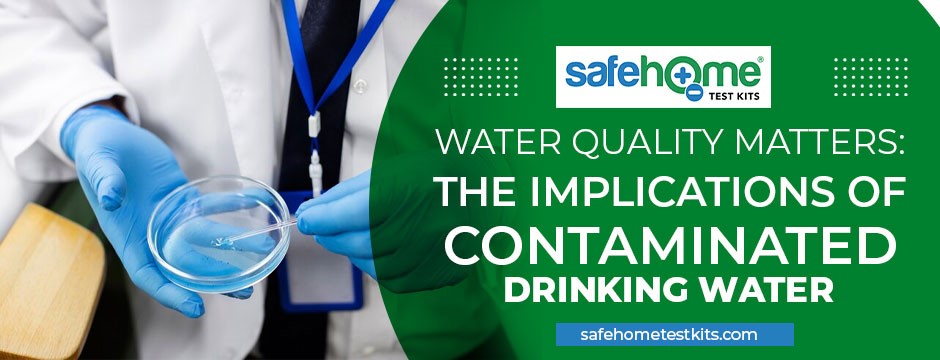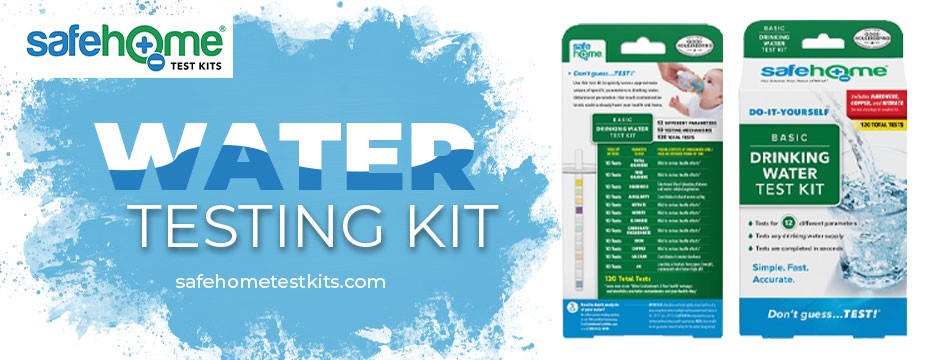Water Quality Matters: The Implications of Contaminated Drinking Water

Water, often described as the essence of life, is a resource we depend on for many purposes, including drinking, hygiene, agriculture, and industry. However, when this vital resource is tainted, it can have dire consequences. In this comprehensive guide, we’ll delve deep into the far-reaching implications of contaminated drinking water. We’ll explore not only the sources and health consequences of water contamination but also its environmental impact. As we navigate these crucial topics, we’ll emphasize the urgency of effective water quality management.
The Hidden Threat: Contaminated Drinking Water
For many individuals in developed nations, the safety of their tap water is often taken for granted. The prevailing assumption is that stringent regulations and advanced treatment processes ensure the purity of the water we consume. However, the reality is more intricate and concerning. Contaminated drinking water remains a significant issue, both in developed and developing regions, with far-reaching implications that affect human health and the environment.
Sources of Contamination
- Aging Infrastructure: In developed nations, aging water infrastructure is a persistent problem. Outdated pipelines can corrode and introduce harmful contaminants, such as lead, into the water supply. This issue gained significant attention following the Flint, Michigan, water crisis.
- Industrial and Agricultural Runoff: Agricultural practices and industrial activities can lead to runoff containing pesticides, heavy metals, and chemicals that infiltrate water sources. These contaminants can have adverse effects on water quality and public health.
- Groundwater Pollution: Many communities rely on groundwater for their drinking water supply. Contaminants like nitrates from agricultural fertilizers, sewage, and industrial waste can infiltrate groundwater, making it unsafe for consumption.
- Microbial Pathogens: Bacteria, viruses, and parasites can infiltrate water supplies, especially in regions with inadequate sanitation. These microbial contaminants can cause waterborne diseases, posing a serious health risk.
Health Implications
- Waterborne Diseases: Contaminated drinking water can be a breeding ground for waterborne diseases such as cholera, dysentery, and cryptosporidiosis. These diseases can lead to severe gastrointestinal distress and, in some cases, even be fatal.
- Lead Exposure: Lead, often found in aging infrastructure, can leach into the water supply, leading to lead exposure. This heavy metal can cause developmental issues in children and health problems in adults.
- Cancer Risk: Certain chemical contaminants found in drinking water, like arsenic and chlorine byproducts, have been linked to an increased risk of cancer.
- Reproductive and Developmental Effects: Exposure to waterborne contaminants, such as endocrine-disrupting chemicals, can adversely affect reproductive health and child development.
Environmental Impact
- Aquatic Ecosystems: Contaminated water affects aquatic ecosystems, harming fish, aquatic plants, and other wildlife. Pollutants like heavy metals can accumulate in aquatic organisms, threatening the entire food chain.
- Habitat Destruction: Polluted water can lead to habitat destruction and the degradation of natural ecosystems, further threatening wildlife populations.
- Algae Blooms: Excessive nutrient runoff, often from agriculture, can lead to harmful algal blooms in bodies of water. These blooms can produce toxins and deplete oxygen, causing harm to aquatic life.
The Call for Water Quality Management
With the myriad of threats posed by contaminated drinking water, there’s an urgent need for effective water quality management. This involves a multi-pronged approach.
- Robust Regulation: Stringent regulatory frameworks must ensure water suppliers adhere to strict quality standards. These regulations set limits on various contaminants and dictate testing and treatment protocols.
- Investment in Infrastructure: Addressing aging water infrastructure is crucial. Replacing corroded pipes and upgrading treatment facilities can help prevent lead contamination and reduce the risk of waterborne diseases.
- Environmental Stewardship: Efforts to reduce industrial and agricultural runoff must be intensified. Practices that minimize the impact of pollutants on water sources are essential for preserving water quality.
- Community Education: Educating the public about the importance of water conservation and reducing pollution at the source can go a long way in preserving water quality. Communities can implement sustainable practices to protect their water supply.
- Technological Advancements: Innovations in water treatment technologies, such as advanced filtration and monitoring systems, can significantly improve water quality management.

Empowering Water Quality Assessment
Understanding the quality of the water we rely on daily is a fundamental concern, and it should be an accessible endeavor for everyone. That’s precisely where the Safe Home® BASIC 120 Drinking Water Test Kit comes into play. This comprehensive kit is your gateway to assess the water that sustains your life comprehensively. It’s more than a mere water test; it’s an assurance of safety and purity.
What Makes It Special
This do-it-yourself water testing kit isn’t just another option; it’s your tool for taking control of your water quality. With an impressive 120 total tests, including 10 tests for each of the 12 different parameters, this kit enables you to assess a wide range of crucial aspects of your water. It ensures your water meets and exceeds the highest quality standards.
Empowering Your Water Quality Assessment
We believe in putting the power back in your hands, and our BASIC 120 Water Quality Test Kit does that. It’s user-friendly and provides rapid and accurate results for the parameters that matter most. Whether you’re concerned about chlorine, nitrite, fluoride, hardness, alkalinity, iron, pH, carbonate/bicarbonate, copper, nitrate, or calcium, this kit equips you with the essential tools to safeguard your water quality.
Efficiency and Convenience Combined
Gaining valuable insights into the safety and purity of your drinking water should be a simple process. That’s why we’ve designed our kit for ease of use, ensuring you can perform the tests in seconds. The kit includes everything you need, so there’s no need to hunt for additional materials.
The Ideal Choice for Assurance
Why leave the quality of your water to chance when you can invest in the best water test kit for drinking water? With the Safe Home® BASIC 120 Water Quality Test Kit, you can experience unparalleled peace of mind. This kit doesn’t just test your water; it tests for your peace of mind. It’s ideal for households, small businesses, and anyone who values the water quality they consume.
Key Features
- Do It Yourself Testing Results In Seconds: You don’t need to be a professional to use this kit. Get results quickly, without the wait.
- Total of 120 tests: This kit is comprehensive, offering an impressive number of tests to monitor your water over an extended period.
- Assesses 12 crucial parameters: Ensure your drinking water meets essential quality standards by testing for 12 crucial parameters.
- Affordable entry-level solution for testing drinking water: Safe Home’s BASIC 120 kit is effective and budget-friendly.
Drink Confidently
With the Safe Home® BASIC 120 Water Quality Test Kit, you’re not merely testing your water; you’re testing for your peace of mind. It’s recognized as one of the best water testing kits for drinking water today. So, drink confidently, knowing your water is safe, pure, and of the highest quality. Don’t compromise on something as vital as your drinking water.

Conclusion: A Precious Resource Worth Protecting
Water is not just a resource; it’s the essence of life itself. The implications of contaminated drinking water are profound, affecting human health and the environment. As such, preserving water quality should be a paramount concern for governments, communities, and individuals.
We must recognize the vital role we each play in safeguarding this precious resource. With comprehensive water quality management, robust regulations, and ongoing public education, we can mitigate the risks associated with contaminated drinking water and ensure that future generations can rely on safe and pure water for their well-being. Water quality matters and it’s a responsibility we all share.


